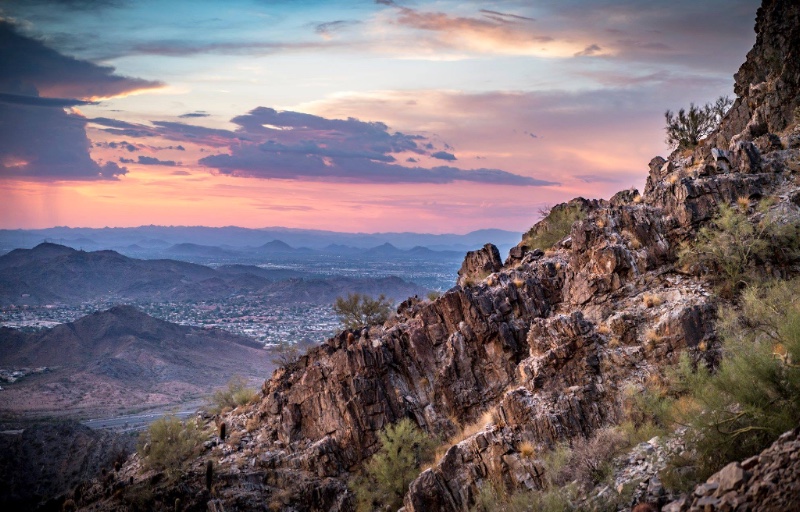Phoenix Mountains Preserve. Image Credit: City of Phoenix Parks and Recreation.
A City that Celebrates its Connection to Nature: Phoenix, Arizona Officially Joins the Biophilic Cities Network
October 2018
The Biophilic Cities Network welcomes Phoenix, Arizona, the fifth largest city in the nation, as an official Partner City. A city known for its unique biophilic features in the arid southwestern United States, Phoenix has an impressive portfolio of conservation, educational, and restoration efforts. The Biophilic Cities Project has long studied Phoenix for its biophilic features and collaborated with David Pijawka, Professor in the School of Geographical Sciences & Urban Planning at Arizona State University, along with many students since the inception of the Biophilic Cities Project. At a glance, Phoenix is home to:
41,000 acres of desert parks and mountain preserves;
200+ miles of trails;
182 flatland parks; and
16,000+ acres of land in one park, South Mountain Park/Preserve, which is one of the largest municipally operated parks in the country.
These impressive conservation accomplishments are a result of careful planning and restoration efforts. Master plans ensure that nature is not only preserved, but prioritized, in Phoenix. Two plans of note are the Sonoran Preserve Master Plan and the Tree and Shade Master Plan. The Sonoran Preserve Master Plan works to protect the preserve, which totals more than 18,000 acres. The city also has a Tree and Shade Master Plan, which sets out goals of investing in trees and the urban forest. The City’s Parks and Recreation Department has a goal of planting 1,500 trees per year in city parks. The plan boasts that every dollar invested in the urban forest results in an impressive return of $2.23 in benefits.
View from North Mountain. Image Credit: City of Phoenix Parks and Recreation.
In addition to strong planning efforts, Phoenix has financing structures to support biophilic efforts. The Phoenix Parks and Preserves Initiative (PPPI) is a voter-approved measure that allocates one cent of sales tax for every $10 of purchases towards parks and the city’s desert parks and preserve system. The initiative has funded a variety of park projects, garnered wide support and was renewed for 30 years by voters in 2008.
Nature-based restoration efforts have been ongoing in Phoenix. The Rio Salado Habitat Restoration Area is the home of the Nina Mason Pulliam Rio Salado Audubon Center, which offers exhibits and programs to enhance visitors’ connections with nature. The Tres Rios Environmental Restoration Project is another prime example of how Phoenix prioritizes restoring habitat for wildlife by celebrating over 150 different species of birds and animals.
According to Mark Hartman, the city of Phoenix’s Chief Sustainability Officer, “As residents of the arid southwest, we recognize the importance of integrating nature and urban life. Our aspiration is to continue strengthening and celebrating our connection to nature in which the quality of life in Phoenix and our viability in the arid southwest depend.”
Biophilic Cities articles and resources on Phoenix:
Film on the McDowell Sonoran Conservancy, please visit http://biophiliccities.org/videos/mcdowell-sonoran-conservancy-a-film/.
Biophilic Cities Journal Article: Ashley Knudsen (2017). Biophilic Phoenix Growing the Biophilic Movement in the Valley of the Sun. Biophilic Cities Journal Vol. 1, Issue 2: 68-72.
Biophilic Cities Post on 2016 APA National Conference in Phoenix: Martha Morris (2016). Reviewing a Renewing Phoenix. BiophilicCities.org.
Interview with ASU Student Research Team: Amani Farooque (2013). ASU Students Research the Biophilic Qualities in Phoenix. BiophilicCities.org.


